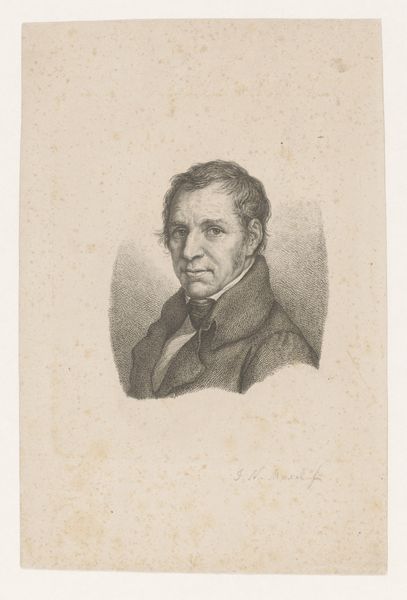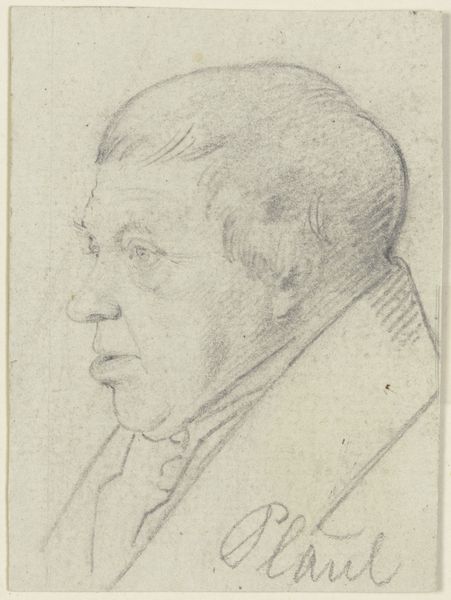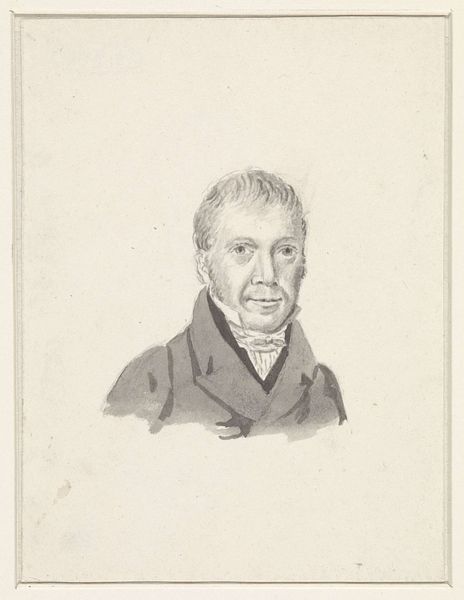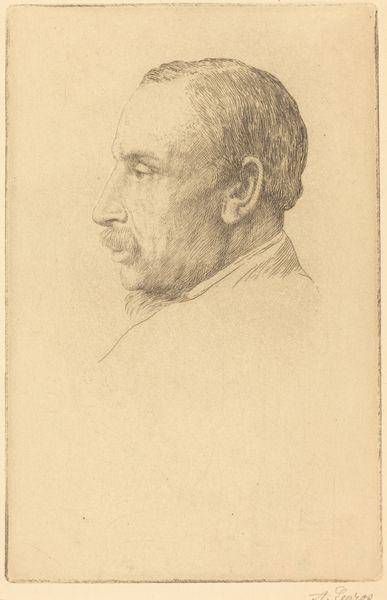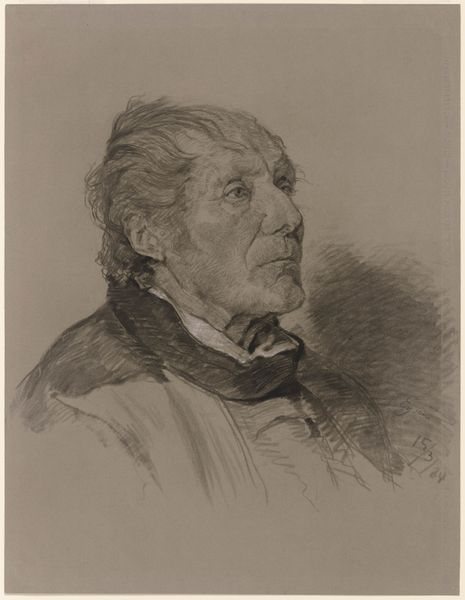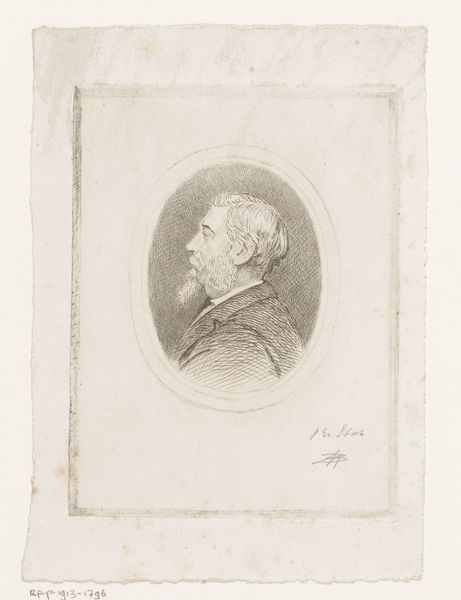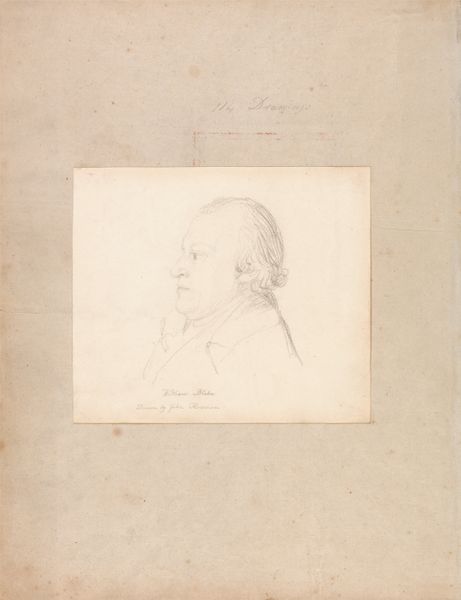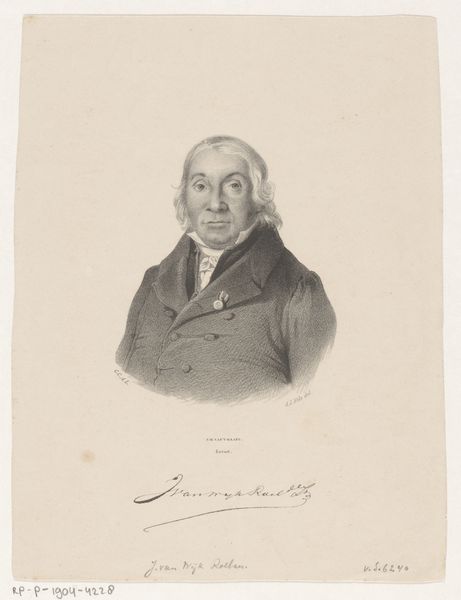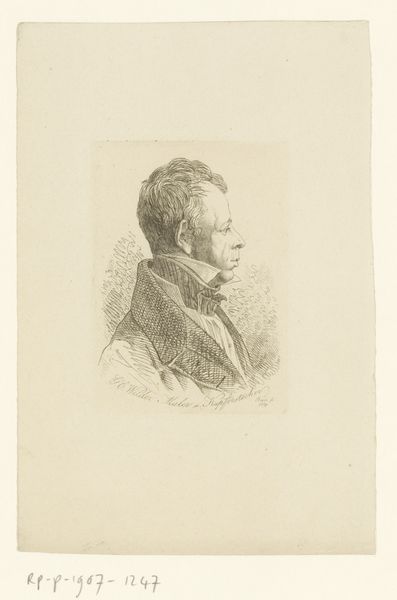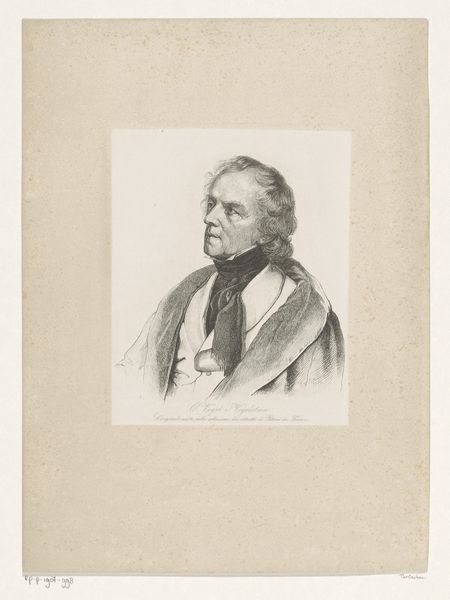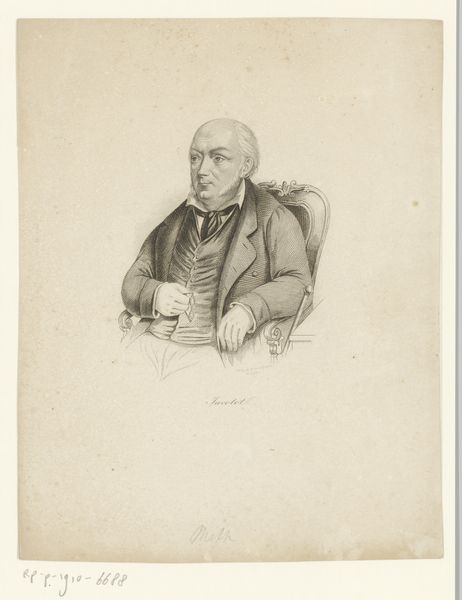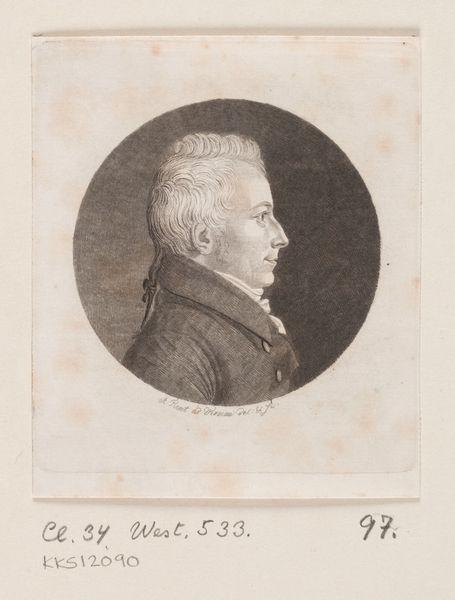
Smedemester og brandmajor Borchard von Würden, H. E. Freunds svigerfar. 1844
0:00
0:00
drawing, pencil
#
portrait
#
drawing
#
romanticism
#
pencil
#
portrait drawing
#
realism
Dimensions: 226 mm (height) x 160 mm (width) (bladmaal)
Curator: Here we have a pencil drawing dating from 1844, crafted by P.C. Skovgaard. The piece is entitled "Smedemester og brandmajor Borchard von Würden, H. E. Freunds svigerfar," which translates to 'Blacksmith and Fire Chief Borchard von Würden, H. E. Freund’s Father-in-Law'. It's a portrait held within the collection of the SMK, the National Gallery of Denmark. Editor: My first impression? He looks like a man who gets things done. A no-nonsense kind of guy. And pencil on paper...it’s interesting how such simple materials can convey so much weight. Curator: Absolutely. And in examining this piece, it's essential to consider the social role of portraiture at this time. Likenesses weren't merely aesthetic; they were often declarations of status, professional standing, and familial connections. This piece depicts a master blacksmith and fire chief, and also emphasizes his kinship with H.E. Freund, a prominent sculptor. It's about networks of power and influence. Editor: I wonder what Herr von Würden was *really* like? The drawing makes him seem stern, but maybe he had a secret passion for, I don't know, collecting butterflies! Did he ever burst into song unexpectedly while hammering a horseshoe? Skovgaard captures a facade, but there’s so much that remains unknowable. Curator: Indeed, and this is where we can see Skovgaard, even in what some might consider a straightforward portrait, subtly engaging with Romantic ideals. While embracing realism in his depiction of von Würden’s features and attire, he’s also playing with the idea of the individual versus societal expectations. We have this robust figure, indicative of hard work and civic duty. Yet there’s a hint of interiority in his eyes, which is something the artist must surely be conscious of. Editor: Maybe that little hint of softness in his gaze is Skovgaard’s personal interpretation. Perhaps he saw something more, some vulnerability hidden beneath that thick coat and stern expression. Or perhaps he was just trying to capture the glint of light! Ha. Curator: A glint that opens the door to countless interpretations! Considering class dynamics and professional identities is critical to understanding 19th-century portraiture as it functioned to legitimize those very roles. Editor: It makes you wonder about the stories behind those tight-lipped portraits we see hanging in galleries everywhere, doesn’t it? What unspoken hopes and dreams were swirling beneath the surface? A fascinating glimpse into a specific life and also, perhaps, humanity. Curator: Precisely, it's this interplay between representation, social context, and imagined inner life that truly elevates this simple drawing beyond just a visual record.
Comments
No comments
Be the first to comment and join the conversation on the ultimate creative platform.
